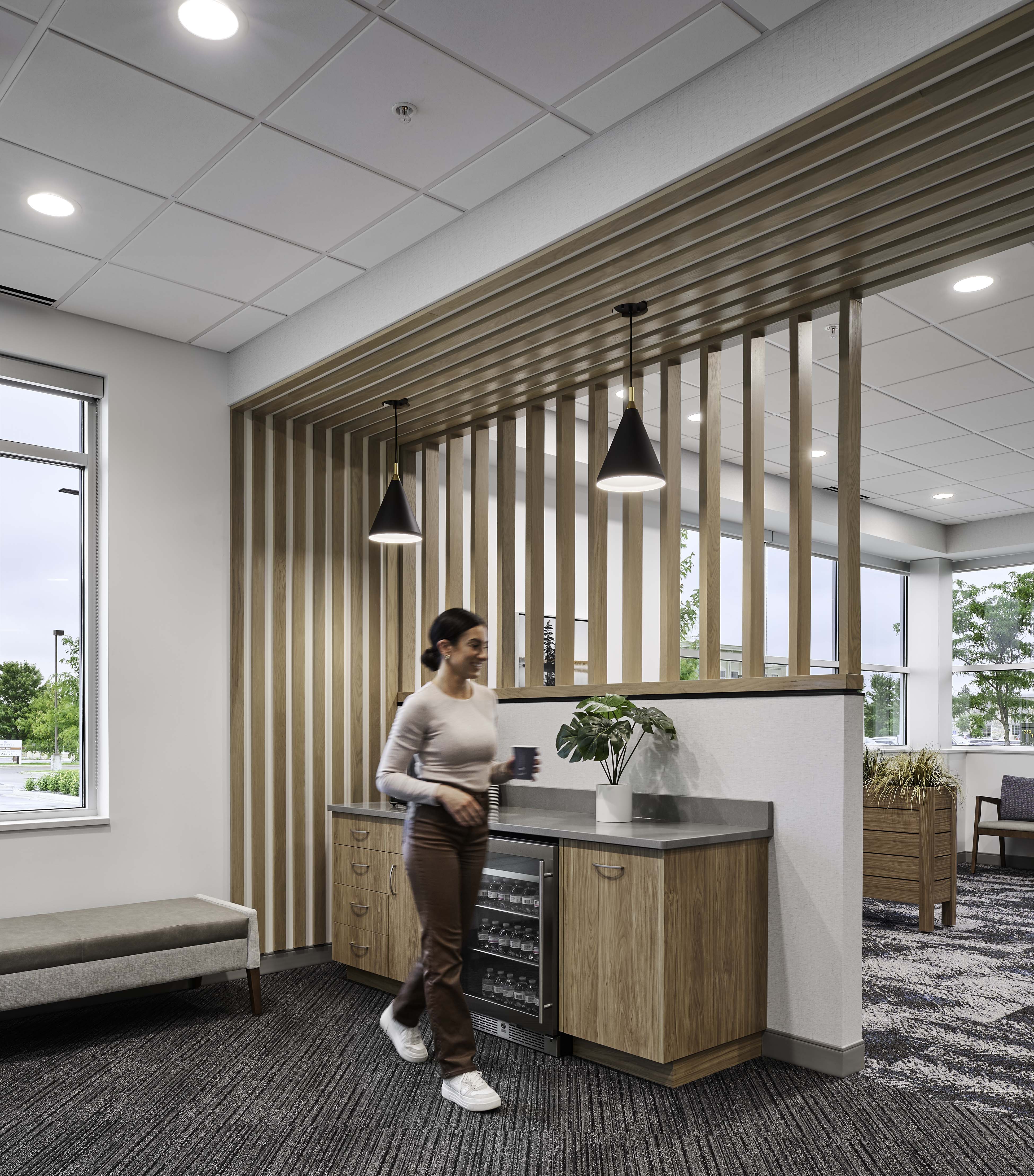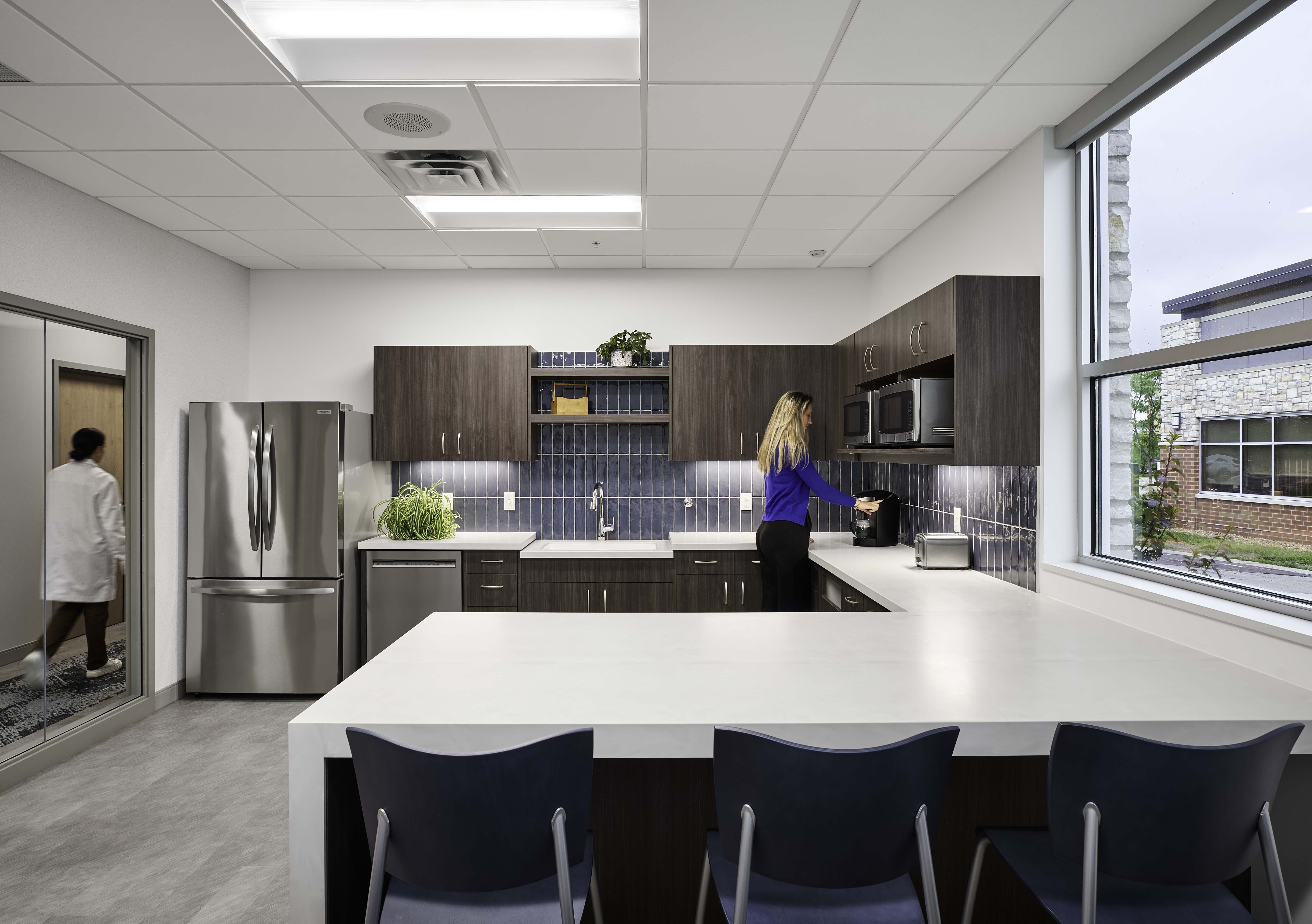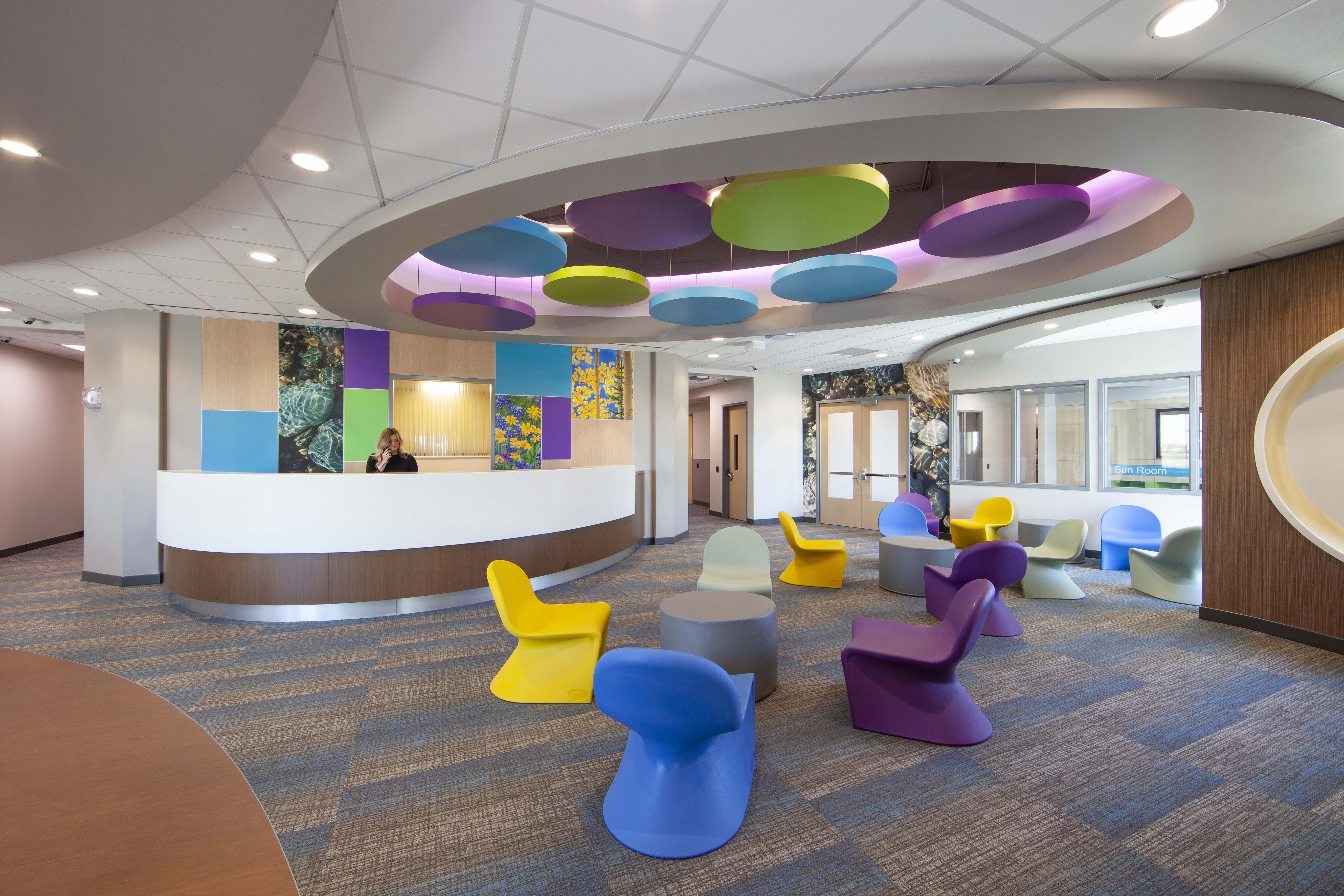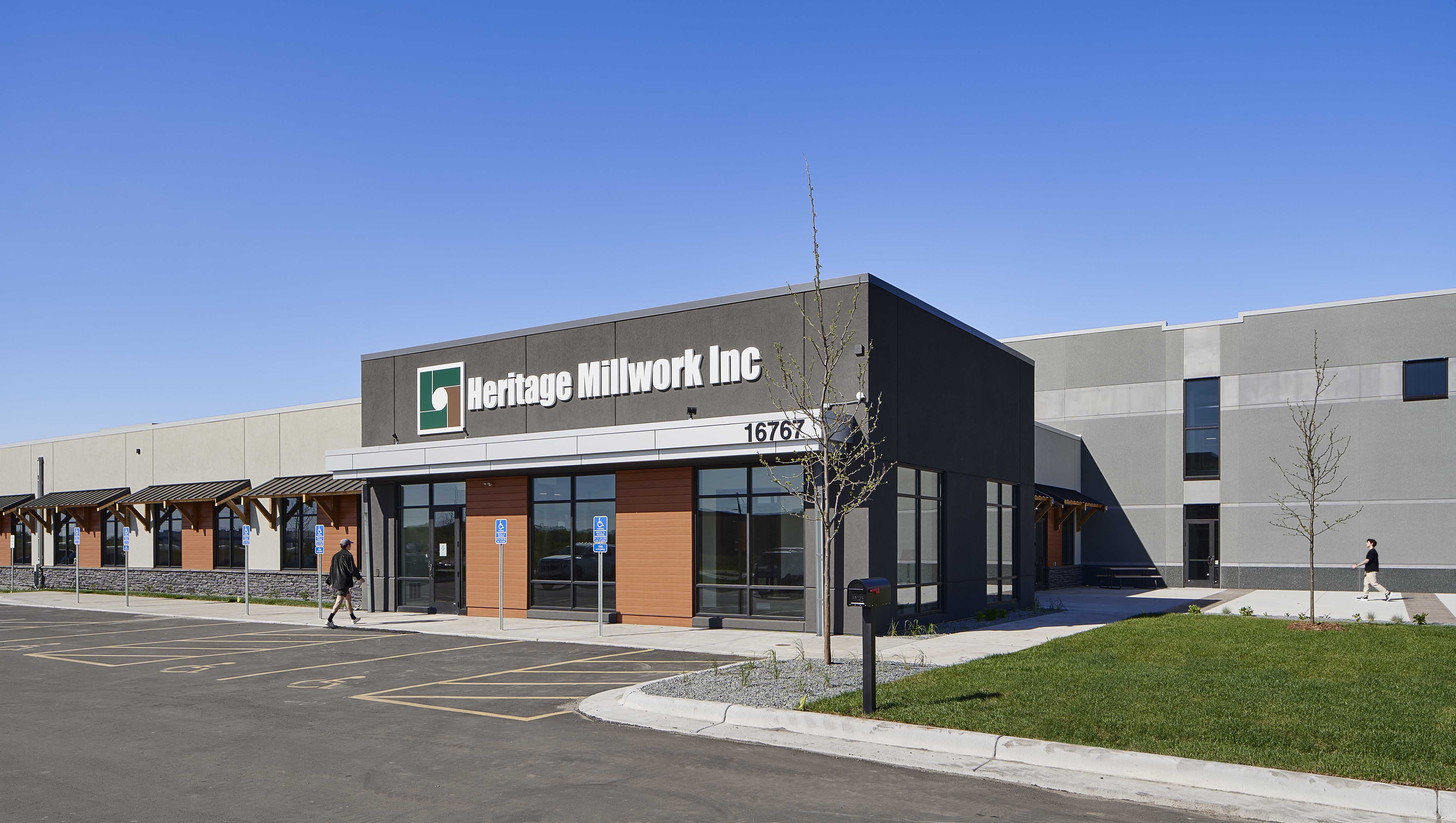Blurring the Lines: How Healthcare Design is Embracing Hospitality to Enhance Patient Experience
November 19, 2025

The line between healthcare and hospitality has blurred dramatically in recent years to the benefit of patients and staff. Today’s patients are not just looking for clinical excellence; they’re seeking an experience that feels personalized, and comfortable = one where they are treated not just as patients, but as guests.
At Mohagen Hansen, we believe planning and design plays a critical role in shaping that experience. By weaving efficiency and hospitality-inspired elements into healthcare environments, we’re helping our clients build trust, reduce anxiety, and create spaces that support healing from the moment someone approaches the healthcare site.

The Psychology Behind Design: Why Hospitality Matters in Healthcare
The environment around us significantly impacts how we feel both physically and emotionally. In healthcare settings, this influence is even more profound. Clinical, sterile design can increase stress, alienate patients, and create a sense of vulnerability. On the other hand, clear directional signage, an intuitive layout, warm lighting, natural materials, and thoughtful details can promote calm, comfort, and connection.
The concept of patient-centered design isn’t just about aesthetics; it’s backed by research. Patient-centered design is an approach that prioritizes the needs, preferences, and experiences of patients in the development of health-related spaces. When done successfully it includes collecting patient and provider input to improve research and qaulity care to ensure relevant outcomes, and patient feedback is integrated into the design solution. Studies show that comfort and emotional well-being lead to better patient outcomes and attraction of top talent.

Rethinking the First Impression: Reception & Check-In Areas
The check-in experience sets the tone for a patient’s visit. Clearly marked and approachable check-in areas that offer patient privacy and staff security are critical. In response to these needs, hospitality-influenced designs prioritize warmth and connection upon arrival.
Imagine a smaller, open check-in station where staff members can easily step out to greet patients. Concierge-style desks, free of bulky barriers, invite conversation and eye contact. Mobile or tablet-based check-in options can add flexibility while reducing bottlenecks. Even subtle design elements like soft lighting and residential-style finishes help people feel welcome rather than processed.
.png)
Waiting Areas Reimagined: From Waiting Room to Lounge Experience
No one enjoys sitting in a waiting room. But what if that space felt more like a living room or a boutique hotel lounge? By replacing rows of identical chairs with comfortable, varied seating arrangements, patients are offered choice and control over their waiting experience. Biophilic elements like green walls or nature-inspired artwork promote calm. Beverage stations, sound masking, and natural daylight all contribute to a more relaxed experience.
We also design with inclusivity in mind: seating for different body types, accessible options, intuitive wayfinding and cultural elements based on the patient demographic. These details matter as they convey care before a patient ever meets their provider.

Exam and Treatment Spaces: Comfort Doesn’t Compromise Function
Exam and procedure rooms must be highly functional and code compliant while supporting the needs of the provider, but that doesn’t mean they can’t also be warm and inviting. We’ve found that simple design touches can go a long way. Dimmable lighting allows the environment to meet the patient’s comfort level. Cabinetry designed to conceal medical equipment creates a cleaner, less intimidating look. Acoustic treatments reduce noise, and thoughtful color palettes reduce stress. These rooms are the heart of the patient experience. A space that feels calm and controlled supports both patient well-being and staff performance.

Staff Spaces Matter, Too
Healthcare providers experience a great deal of stress and they give so much of themselves; therefore, they deserve environments that give back and support them. Staff lounges, team rooms, and touchdown spaces often get overlooked, but we believe they’re essential for well-being which directly supports retention and attraction.
By incorporating natural light, comfortable furnishings, and even private recharge areas, we design staff spaces that promote rest and connection. These hospitality-inspired respite areas acknowledge the demanding nature of healthcare work and offer moments of calm throughout the day.

Designing with Specificity: One Size Doesn’t Fit All
Not all healthcare spaces serve the same population, or even the same emotional tone. That’s where the flexibility of hospitality design truly shines. In a pediatric clinic, we might integrate playful colors, interactive features, and family seating to put children at ease. For women’s health or dermatology clinics, we may lean into spa-like aesthetics with soft textures, serene tones, and elegant lighting. Behavioral health spaces benefit from specialized planning, finishes and furniture that prioritze safety, privacy, and calm.
We design each space around the patient demographic, as well as the treatment type, and brand personality of the provider, creating a custom experience everytime.

Bringing It All Together: Our Approach to Healthcare + Hospitality Design
At Mohagen Hansen, we approach every healthcare project with a simple question: How can we enhance the patient and staff experience?
We know that a welcoming, thoughtfully designed space builds trust and comfort. We also understand the technical demands of healthcare environments. Our team brings deep experience in both healthcare planning and design, allowing us to balance code compliance, operational efficiency, aesthetics and emotional impact with ease.
From new construction to full-scale renovations, we partner closely with our clients to bring their vision to life, and to elevate every touchpoint of the patient and staff experience. Healthcare spaces don’t have to look and feel clinical to communicate quality care. Through thoughtful planning and design, they can be places of comfort, dignity, and calm – similar to the way one feels visiting a luxury hotel or spa.
At Mohagen Hansen, we’re passionate about creating environments that support healing on every level. If you’re ready to explore how hospitality-inspired design can transform your clinic or practice, we’d love to start a conversation. Contact us to learn more or view our portfolio of healthcare projects.




